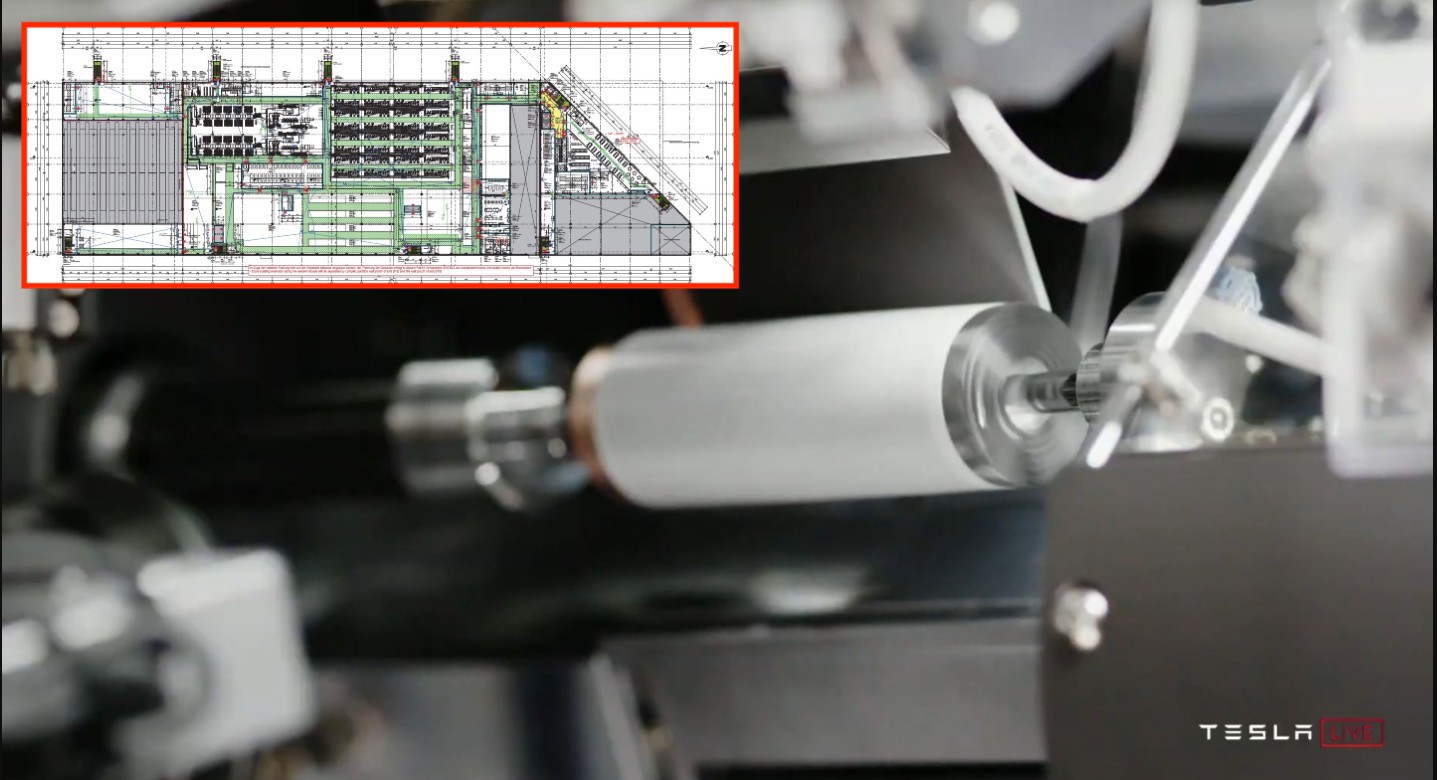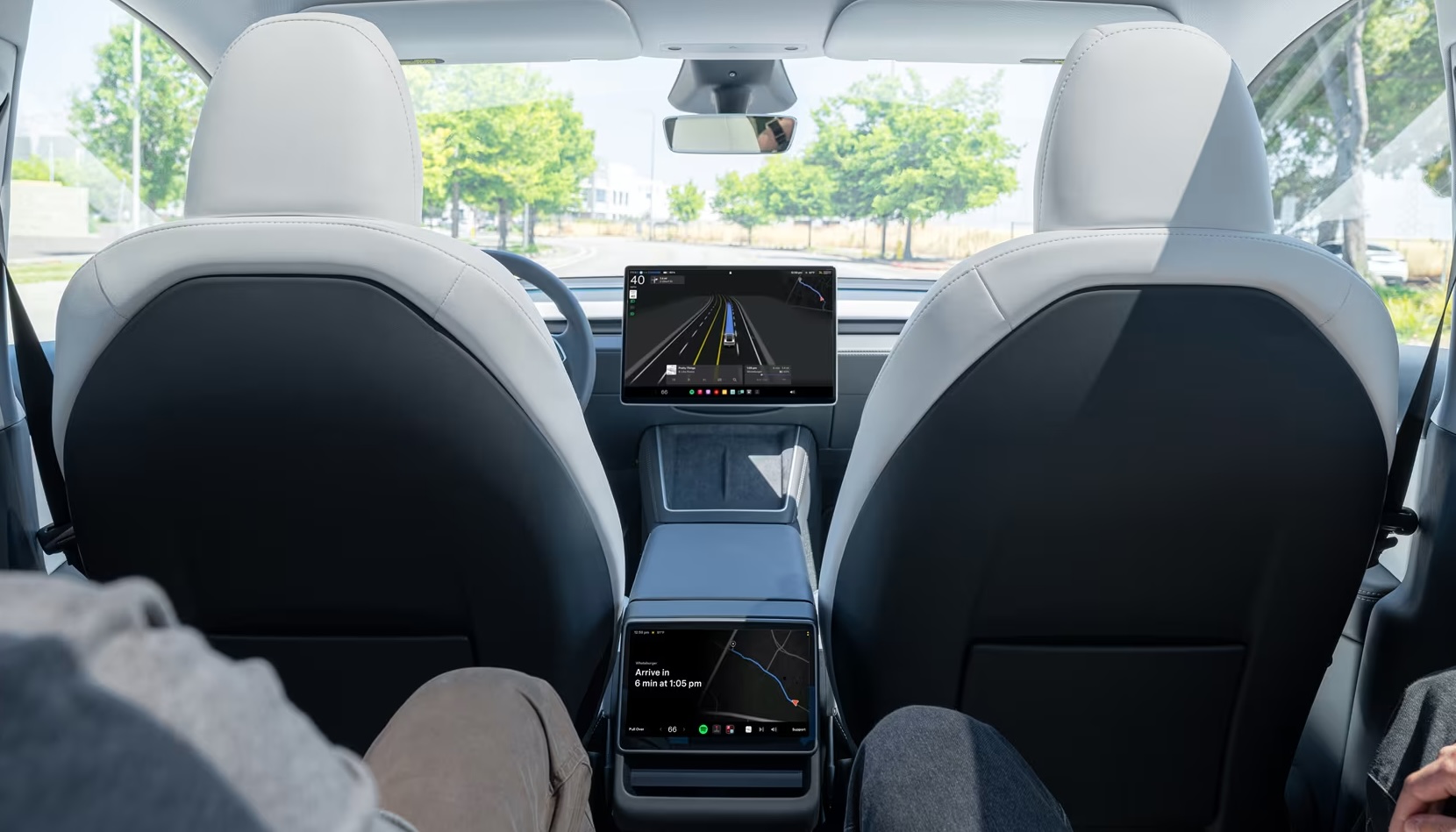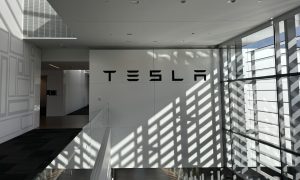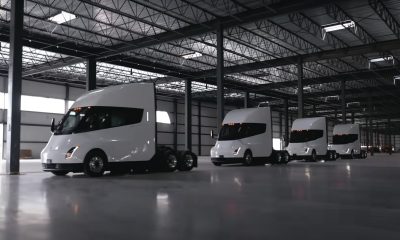

News
Tesla’s 4680 cell production process outlined in Giga Berlin’s revised filings
Tesla’s revised documents for Gigafactory Berlin have been posted online, and they are a treasure trove of information. The documents provided some new details about Tesla’s planned 4680 battery plant in Gigafactory Berlin, which Elon Musk noted is on track to be one of the world’s largest battery production facilities. They also outlined how Tesla’s 4680 cells are produced.
While sections of the filing pertaining to the planned 4680 battery cell plant in Giga Berlin were blacked out due to sensitive information that could not be made public, the documents show some important tidbits about the upcoming facility. This includes the facility’s cell production operations over four floors, with anode and cathode production on the first floor and tabless cell production on the third floor. The battery plant is massive, requiring large foundations similar to Gigafactory Berlin’s Phase 1 zone.
Anode and cathode production in the 1st floor pic.twitter.com/tOoV4b3Iur
— Tobias Lindh (@tobilindh) June 18, 2021
Most importantly, Tesla also submitted a simplified diagram of its 4680 battery cell production process, though most of the diagram was blacked out in the revised filing’s public release. However, the company provided a brief overview of how its new battery cell will be produced in the upcoming facility (roughly translated through Google Translate).
“The battery the Gigafactory Berlin requires special systems and process steps. The anodes and cathodes consist of coated current collector foils. Copper is used as the material for the anode foil and aluminum is used for the cathode foil. The anode and cathode components are manufactured in mixed processes (A020-01 and A020-02), which only use materials in powder form. The new materials used are tested and approved in our own laboratory (A020-11).
“In order for the powder coating to adhere to the two films, they must first be pre-coated with a thin layer of adhesive (substrate) (A020-03 and A020-04). This substrate is delivered in containers. The pre-coating is necessary because a dry coating with powder takes place. After the anode and cathode components have been mixed, they are applied as a coating to the respective substrate-coated film in order to establish electrical contact (A020-05 and A020-06). The current collector foils, coated with the anode or cathode components, result in the finished anode or cathode.
Page 239 pic.twitter.com/7gDk2fSeVy
— Giga Berlin / Gigafactory 4 (@gigafactory_4) June 18, 2021
The revised filings also provided a general idea of how Tesla’s tabless cell production works. Among these is the fact that the finished 4680 cells would be subjected to 10 days’ worth of curing after their formation.
“The anode or cathode is then cut to the required lengths with a laser in the “tabless process” (A020-08). The anode, the cathode and the separator are alternately placed one on top of the other and rolled up into a roll. This roller is then inserted into a metal housing, which is manufactured from steel rollers in a die-cutting and deep-drawing process (A020-07). In the assembly area, the final assembly and filling of the cell takes place with small amounts of electrolyte (approx. 10% of the cell weight) (A020-09).
“The electrolyte is absorbed by the electrode coatings and enables the lithium ions to move back and forth between the anode and cathode. The housing is then closed with a lid in a welding process. The last step is the formation (A020-10) of the cell. In the formation process, the cell is electrically started up by charging and discharging it under different temperature conditions. The finished cell remains in this area for approx. 10 days and is then put to further use. The cells produced are subjected to random quality control in our own laboratory (A020-11).”
A link to Tesla’s filings for Gigafactory Berlin could be found here.
Do you have anything to share with the Teslarati Team? We’d love to hear from you, email us at tips@teslarati.com.
News
Tesla begins Robotaxi certification push in Arizona: report
Tesla seems serious about expanding its Robotaxi service to several states in the coming months.

Tesla has initiated discussions with Arizona transportation regulators to certify its driverless Robotaxi service in the state, as per a recent report from Bloomberg News. The move follows Tesla’s launch of its Robotaxi pilot program in Austin, Texas, as well as CEO Elon Musk’s recent comments about the service’s expansion in the Bay Area.
The Arizona Department of Transportation confirmed to Bloomberg that Tesla has reached out to begin the certification process for autonomous ride-sharing operations in the state. While details remain limited, the outreach suggests that Tesla is serious about expanding its driverless Robotaxi service to several territories in the coming months.
The Arizona development comes as Tesla prepares to expand its service area in Austin this weekend, as per CEO Elon Musk in a post on X. Musk also stated that Tesla is targeting the San Francisco Bay Area as its next major market, with a potential launch “in a month or two,” pending regulatory approvals.
Tesla first launched its autonomous ride-hailing program on June 22 in Austin with a small fleet of Model Y vehicles, accompanied by a Tesla employee in the passenger seat to monitor safety. While still classified as a test, Musk has said the program will expand to about 1,000 vehicles in the coming months. Tesla will later upgrade its Robotaxi fleet with the Cyercab, a two-seater that is designed without a steering wheel.
Sightings of Cybercab castings around the Giga Texas complex suggests that Tesla may be ramping the initial trial production of the self-driving two-seater. Tesla, for its part, has noted in the past that volume production of the Cybercab is expected to start sometime next year.
In California, Tesla has already applied for a transportation charter-party carrier permit from the state’s Public Utilities Commission. The company is reportedly taking a phased approach to operating in California, with the Robotaxi service starting with pre-arranged rides for employees in vehicles with safety drivers.
News
Tesla sets November 6 date for 2025 Annual Shareholder Meeting
The automaker announced the date on Thursday in a Form 8-K.

Tesla has scheduled its 2025 annual shareholder meeting for November 6, addressing investor concerns that the company was nearing a legal deadline to hold the event.
The automaker announced the date on Thursday in a Form 8-K submitted to the United States Securities and Exchange Commission (SEC). The company also listed a new proposal submission deadline of July 31 for items to be included in the proxy statement.
Tesla’s announcement followed calls from a group of 27 shareholders, including the leaders of large public pension funds, which urged Tesla’s board to formally set the meeting date, as noted in a report from The Wall Street Journal.
The group noted that under Texas law, where Tesla is now incorporated, companies must hold annual meetings within 13 months of the last one if requested by shareholders. Tesla’s previous annual shareholder meeting was held on June 13, 2024, which placed the July 13 deadline in focus.
Tesla originally stated in its 2024 annual report that it would file its proxy statement by the end of April. However, an amended filing on April 30 indicated that the Board of Directors had not yet finalized a meeting date, at least at the time.
The April filing also confirmed that Tesla’s board had formed a special committee to evaluate certain matters related to CEO Elon Musk’s compensation plan. Musk’s CEO performance award remains at the center of a lengthy legal dispute in Delaware, Tesla’s former state of incorporation.
Due to the aftermath of Musk’s legal dispute about his compensation plan in Delaware, he has not been paid for his work at Tesla for several years. Musk, for his part, has noted that he is more concerned about his voting stake in Tesla than his actual salary.
At last year’s annual meeting, TSLA shareholders voted to reapprove Elon Musk’s compensation plan and ratified Tesla’s decision to relocate its legal domicile from Delaware to Texas.
Elon Musk
Grok coming to Tesla vehicles next week “at the latest:” Elon Musk
Grok’s rollout to Tesla vehicles is expected to begin next week at the latest.

Elon Musk announced on Thursday that Grok, the large language model developed by his startup xAI, will soon be available in Tesla vehicles. Grok’s rollout to Tesla vehicles is expected to begin next week at the latest, further deepening the ties between the two Elon Musk-led companies.
Tesla–xAI synergy
Musk confirmed the news on X shortly after livestreaming the release of Grok 4, xAI’s latest large language model. “Grok is coming to Tesla vehicles very soon. Next week at the latest,” Musk wrote in a post on social media platform X.
During the livestream, Musk and several members of the xAI team highlighted several upgrades to Grok 4’s voice capabilities and performance metrics, positioning the LLM as competitive with top-tier models from OpenAI and Google.
The in-vehicle integration of Grok marks a new chapter in Tesla’s AI development. While Tesla has long relied on in-house systems for autonomous driving and energy optimization, Grok’s integration would introduce conversational AI directly into its vehicles’ user experience. This integration could potentially improve customer interaction inside Tesla vehicles.
xAI and Tesla’s collaborative footprint
Grok’s upcoming rollout to Tesla vehicles adds to a growing business relationship between Tesla and xAI. Earlier this year, Tesla disclosed that it generated $198.3 million in revenue from commercial, consulting, and support agreements with xAI, as noted in a report from Bloomberg News. A large portion of that amount, however, came from the sale of Megapack energy storage systems to the artificial intelligence startup.
In July 2023, Musk polled X users about whether Tesla should invest $5 billion in xAI. While no formal investment has been made so far, 68% of poll participants voted yes, and Musk has since stated that the idea would be discussed with Tesla’s board.
-

 Elon Musk1 week ago
Elon Musk1 week agoTesla investors will be shocked by Jim Cramer’s latest assessment
-

 Elon Musk3 days ago
Elon Musk3 days agoElon Musk confirms Grok 4 launch on July 9 with livestream event
-

 Elon Musk16 hours ago
Elon Musk16 hours agoxAI launches Grok 4 with new $300/month SuperGrok Heavy subscription
-

 News7 days ago
News7 days agoTesla Model 3 ranks as the safest new car in Europe for 2025, per Euro NCAP tests
-

 Elon Musk2 weeks ago
Elon Musk2 weeks agoA Tesla just delivered itself to a customer autonomously, Elon Musk confirms
-

 Elon Musk1 week ago
Elon Musk1 week agoxAI’s Memphis data center receives air permit despite community criticism
-

 Elon Musk2 weeks ago
Elon Musk2 weeks agoTesla’s Omead Afshar, known as Elon Musk’s right-hand man, leaves company: reports
-

 News2 weeks ago
News2 weeks agoXiaomi CEO congratulates Tesla on first FSD delivery: “We have to continue learning!”
















